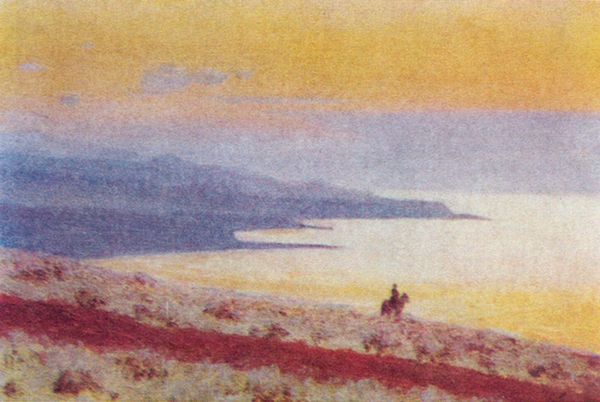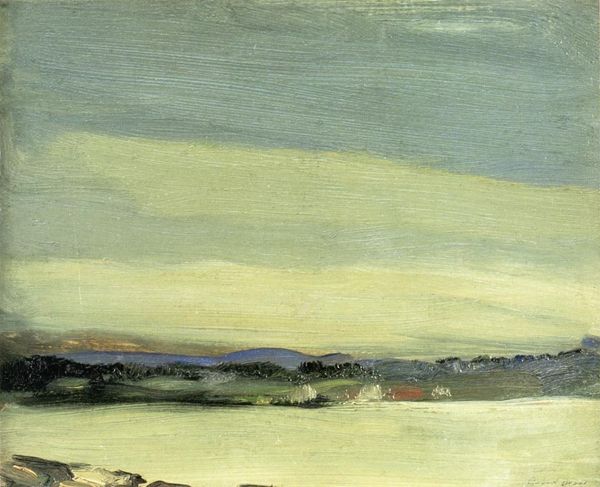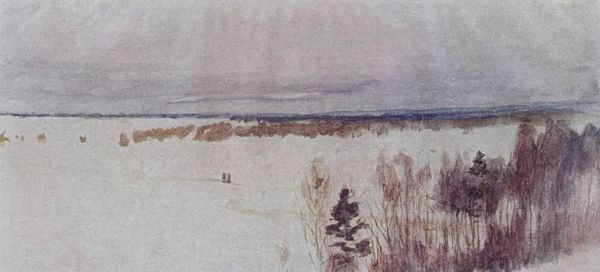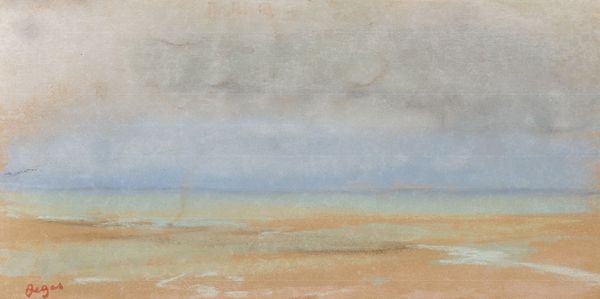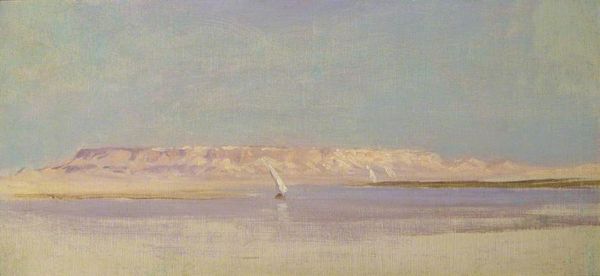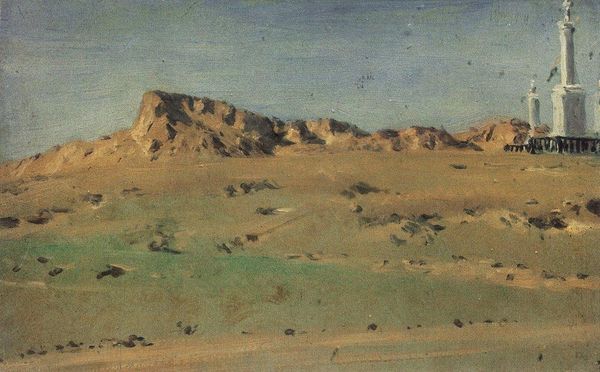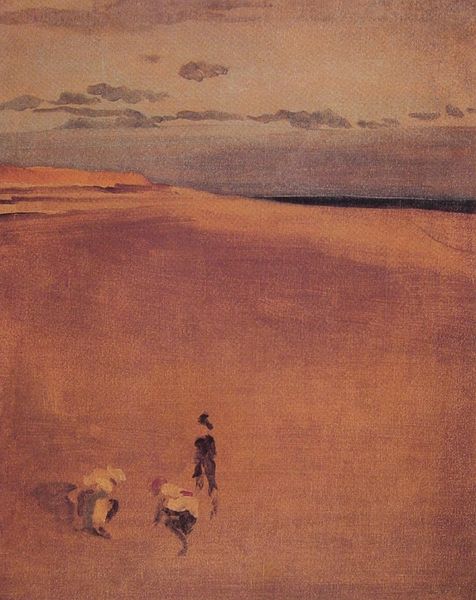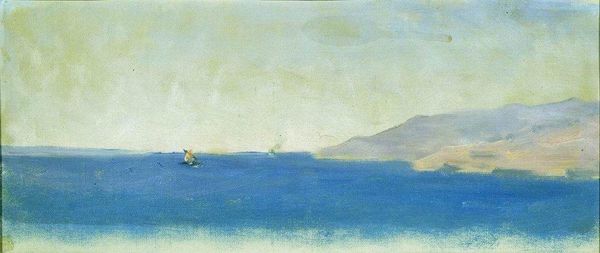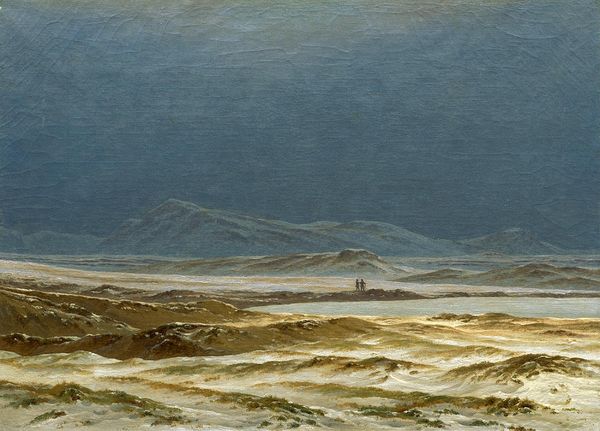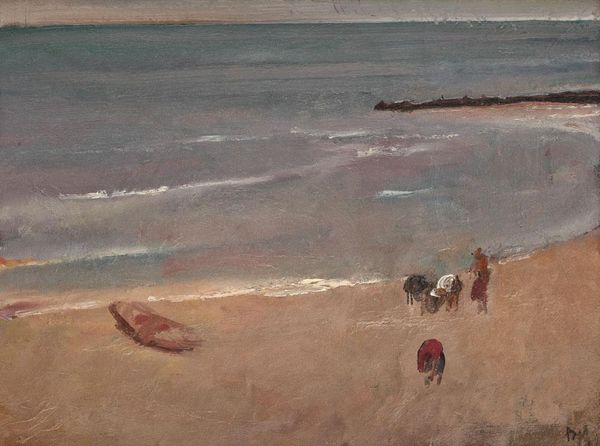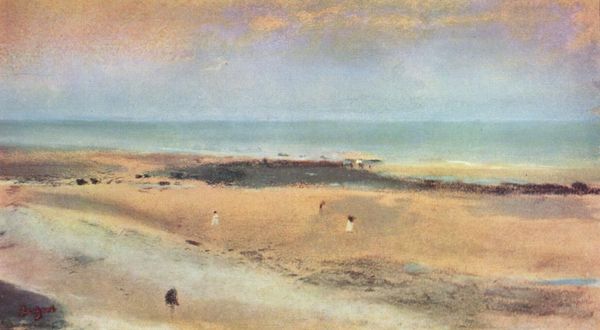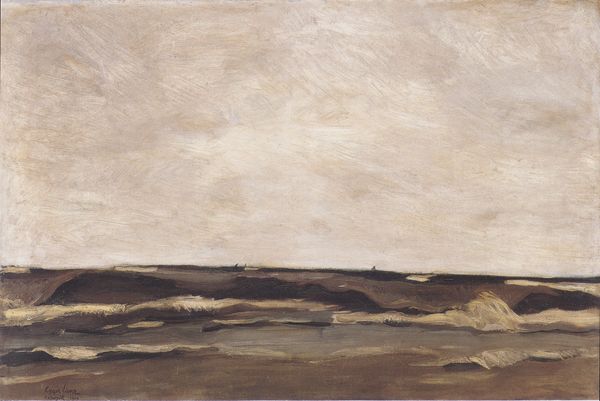
#
sky
#
abstract painting
#
impressionist painting style
#
possibly oil pastel
#
fluid art
#
acrylic on canvas
#
underpainting
#
painting painterly
#
watercolour bleed
#
watercolour illustration
#
watercolor
Copyright: Public domain
Editor: Here we have Makovsky's painting simply titled, *Desert*. While we don’t have a firm date for it, its loose brushwork feels incredibly modern. I’m struck by how empty yet expansive it feels, and the bright, almost unnatural, color of the sky. What do you see in this piece? Curator: What catches my eye is how the artist renders a space so immense, with the sky acting almost as a lid on the scene. Do you feel the loneliness conveyed, enhanced by that solitary figure seemingly swallowed up by the landscape? Editor: Yes, absolutely. There's a vulnerability in that small figure, swallowed by the immensity. It makes me wonder about the figures on horseback in the distance - do they have any connection to him, or are they similarly isolated? Curator: That contrast—the collective journey versus the individual’s—speaks volumes. Consider how the horse, often a symbol of power and nobility, appears diminished in this vastness. Could the artist be commenting on the shared human condition of insignificance against the backdrop of the eternal desert? Editor: That's fascinating. It reframes my understanding – I initially saw only the emptiness, but now I'm more aware of how it stages a narrative about humanity's place in the world. The artist appears to be drawing a direct comparison, but leaving much of the picture open-ended for the audience to arrive at their own conclusions. Curator: Exactly! And think about the colors chosen – that intensely blue sky, almost oppressive. Blue is often associated with tranquility, but here, combined with the desert's muted tones, does it evoke something closer to anxiety or spiritual longing? Perhaps it acts as a looking glass into our own complex relationship with existential exploration, forcing us to contend with our place. Editor: It’s definitely made me consider the desert as a symbol of both physical and internal journeys, stripping away the nonessential to leave only what is fundamental. I now see the symbolism inherent to it more broadly, which I hadn't initially considered. Curator: Indeed! It prompts reflections far beyond the canvas, wouldn't you say?
Comments
No comments
Be the first to comment and join the conversation on the ultimate creative platform.

